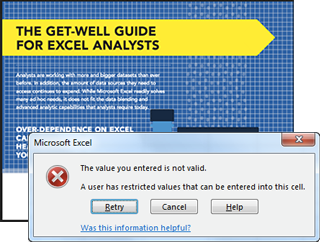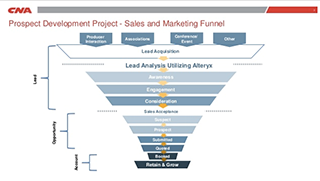Analytics
News, events, thought leadership and more.- Subscribe to RSS Feed
- Mark as New
- Mark as Read
- Bookmark
- Subscribe
- Printer Friendly Page
- Notify Moderator
While Data Blending is a term I’ve heard our customers get very excited about, it is interesting how quickly myths start to arise around something so descriptive. Data Blending is the process of combining data from multiple sources to create an actionable analytic dataset. This week Alteryx is having fun with analysts from over 180 joint Alteryx/ Tableau customers, all of whom use our software to blend their data, at the Tableau Conference in Seattle (#data14), so I thought I would share the top 5 myths I’ve heard about Data Blending.
1. Myth: Data Blending is just like Extraction Transformation and Load (ETL) or Data Integration
While there are a number of similar terms or pieces of functionality (such as data cleansing, data quality, transformation etc.), the biggest difference is who is doing the work of preparing the data. Traditional approaches for creating an analytic dataset rely on a specialist, data expert or scientist to take an analyst’s requirements and deliver upon them. This is a slow and time consuming process that usually has multiple iterations – each with more time spent by the analyst waiting for the specific set of data he/she needs. With data blending, it is the analyst themselves who access, clean, prepare and integrate the data. Then, having advanced analytics in the same workflow, adds even more value.
 2. Myth: You can achieve the same results with spreadsheet and/or an Access DB
2. Myth: You can achieve the same results with spreadsheet and/or an Access DB
This is actually what the majority of analysts have to deal with every day (Alteryx has 500+ customers, so we still have some ways to go to get in front of every single one of the 2M+ analysts in the world). The problem with doing VLOOKUPs, linking spreadsheets and doing SQL is that a) it’s very frustrating and b) it becomes a house of cards as requirements, data sources, or analysis change. Microsoft Excel is a wonderful tool for the last mile of presentation and lightweight analysis but it is not a good interface for doing the multiple steps required for repeatable data blending. We’ve recognized this affliction and written about the cure.
 3. Myth: Putting the data in the cloud with the next gen-version of a spreadsheet will solve the problem
3. Myth: Putting the data in the cloud with the next gen-version of a spreadsheet will solve the problem
Making things easier for a data analyst is an honorable effort, but taking the last generation of data interface (Excel), and putting it into the cloud with limited connections to all the data an analyst needs is not going to solve the core problem. This is about data analysts, not scientists. The workflow really does matter because the gap between the sources of data and what an analyst finally needs is a long way that the spreadsheet paradigm doesn’t shorten.
 4. Myth: Data Blending is only for the "simple data"
4. Myth: Data Blending is only for the "simple data"
This is actually a symptom of misunderstanding what analysts do every day. There is an assumption that data scientists are doing all the sexy stuff with weblogs, XML feeds, and Hadoop. The reality is that the place where real decisions are made is in the line of business - that is where analysts work - and they need data of all kinds spatial, Big Data, cloud data to perform traditional analytics and even predictive analytics and much more. Check out how our friends at Bolton Wanderers are using Alteryx to deliver spatially oriented sports analytics or how the team at CNA responsible for lead scoring is using Alteryx to blend data across it’s sales and marketing syst....
 5. Myth: Data Blending is only for small amounts of "desktop" data
5. Myth: Data Blending is only for small amounts of "desktop" data
The Experian Household file for the United States of America is prepared with a Data Blending tool (Alteryx). Not enough proof? Time Warner Cable us Alteryx to blend data that drive advertising sales decisions – cutting their tu.... The Verizon network is very big and has a lot of customers: Verizon Wireless use Alteryx to blend data about network performance for handsets in order to delive....
I’m sure lots more myths will evolve, but my primary reaction is that customers dictate what matters, and given that over 90% of our customers report that they use Alteryx every day to blend data - I feel confident that we’re leading a revolution for analysts.
You must be a registered user to add a comment. If you've already registered, sign in. Otherwise, register and sign in.